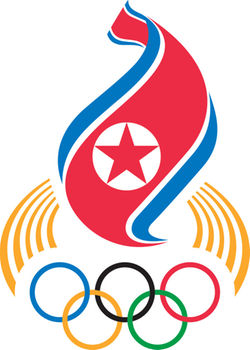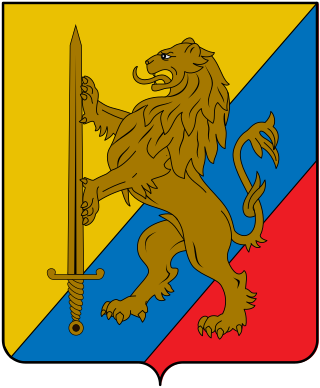Related Research Articles

Seoul National University is a public research university located in Seoul, South Korea. It is one of the SKY universities and a part of the Flagship Korean National Universities.

South Jeolla Province, also known as Jeonnam (전남), is a province in the Honam region, South Korea, and the southernmost province in mainland Korea. South Jeolla borders the provinces of North Jeolla to the north, South Gyeongsang to the northeast, and Jeju to the southwest in the Korea Strait.

Kangwon Province is a province of North Korea, with its capital at Wŏnsan. Before the division of Korea in 1945, Kangwŏn Province and its South Korean neighbour Gangwon Province formed a single province that excluded Wŏnsan.

Hwacheon County is a county in Gangwon Province, South Korea. The northern border is, in some places, within nine kilometres of the Korean Demilitarized Zone. Neighboring counties are Cheorwon to the northwest and north, Yanggu to the east, Chuncheon to the south, and the Gyeonggi-do province to the southwest. The county consists largely of mountains and rivers, between which are small farming communities, military bases and military training grounds. The area is renowned for its rivers, lake trout, indigenous otters, and natural scenery.

Kimhwa County is a kun, or county, in Kangwŏn province, North Korea.

P'yŏnggang County is a kun, or county, in Kangwŏn province, North Korea. It borders Sep'o to the north, Ch'ŏrwŏn to the south, Ich'ŏn to the west, and Kimhwa to the east.

The Olympic Committee of the Democratic People's Republic of Korea is the National Olympic Committee (NOC) representing North Korea.
The Battle of Kumsong, also known as the Jincheng Campaign, was one of the last battles of the Korean War. During the ceasefire negotiations seeking to end the Korean War, the United Nations Command (UNC) and Chinese and North Korean forces were unable to agree on the issue of prisoner repatriation. South Korean President Syngman Rhee, who refused to sign the armistice, released 27,000 North Korean prisoners who refused repatriation. This action caused an outrage among the Chinese and North Korean commands and threatened to derail the ongoing negotiations. As a result, the Chinese decided to launch an offensive aimed at the Kumsong salient. This would be the last large-scale Chinese offensive of the war, scoring a victory over the UNC forces.

The Kim Chong-t'ae Electric Locomotive Works (Korean: 김종태전기기관차연합기업소) in P'yŏngyang is North Korea's largest manufacturer of railway equipment. Established in November 1945 in Sŏsŏng-guyŏk, P'yŏngyang near the P'yŏngyang Railway University and the Korean State Railway's West P'yŏngyang Station, the factory manufactures and overhauls electric and diesel locomotives, passenger cars, streetcars and subway trainsets. It is subordinate to the North Korean Ministry of Railways.
Gimhwa or Kimhwa may refer to:
Geumseong (金城) was the capital of Silla, one of the Three Kingdoms of Korea.
Kim Gap-sun was a Joseon bureaucrat and modern Korean businessman, politician, and realtor. He was a significant slaver and landowner in South Chungcheong Province during the Japanese colonial period.
Kimhwa County was a historical county of Korea that lies on the border of modern-day South and North Korea.
National Route 43 is a national highway in South Korea connecting Sejong City to Kosong County. It was established on 31 August 1971.

The Kŭmsŏng class locomotives are an unlicensed copy of the Soviet-made M62-type diesel locomotive, built by the Kim Chong-t'ae Electric Locomotive Works in P'yŏngyang, North Korea.
The Kŭmsŏng Tractor Factory, located in Kiyang-dong, Kangsŏ-guyŏk, Namp'o, is North Korea's largest manufacturer of tractors, bulldozers, and other agricultural equipment. Employing around 10,000 workers, the factory has a floor area of 142,000 m2 (1,530,000 sq ft) on a total area of 400,000 m2 (4,300,000 sq ft). Peak production capacity is 10,000 tractors per year. The factory's current product is the Chollima-804Ka tractor. Claims have been made this factory also produces TEL mobile missile platforms.

The Colombian Battalion was an infantry battalion of the Colombian Army that served under United Nations Command during the Korean War from 1951 to 1954. The first Colombian military unit to serve in Asia, the battalion was attached to the U.S. 7th Infantry Division and 25th Infantry Divisions.
The 204th Division was created in January 1949 under the Regulation of the Redesignations of All Organizations and Units of the Army, issued by Central Military Commission on November 1, 1948, basing on the 18th Brigade, 6th Column of the Huabei Military Region Field Force, which was activated in November 1947.
The KN-19 Kumsong-3 is a North Korean surface-to-surface anti-ship cruise missile. The technology is based on the Russian Kh-35. The missile is ground- or sea-launched.
Cheorwon County was a historical county of Korea.
References
- ↑ "금성 (金城)- 한국민족문화대백과사전". Archived from the original on 2023-05-30. Retrieved 2023-05-30.
- ↑ 조선총독부령 제111호 (1913년 12월 29일)
- ↑ "김화군 (金化郡)". Archived from the original on 2023-05-30. Retrieved 2023-05-30.